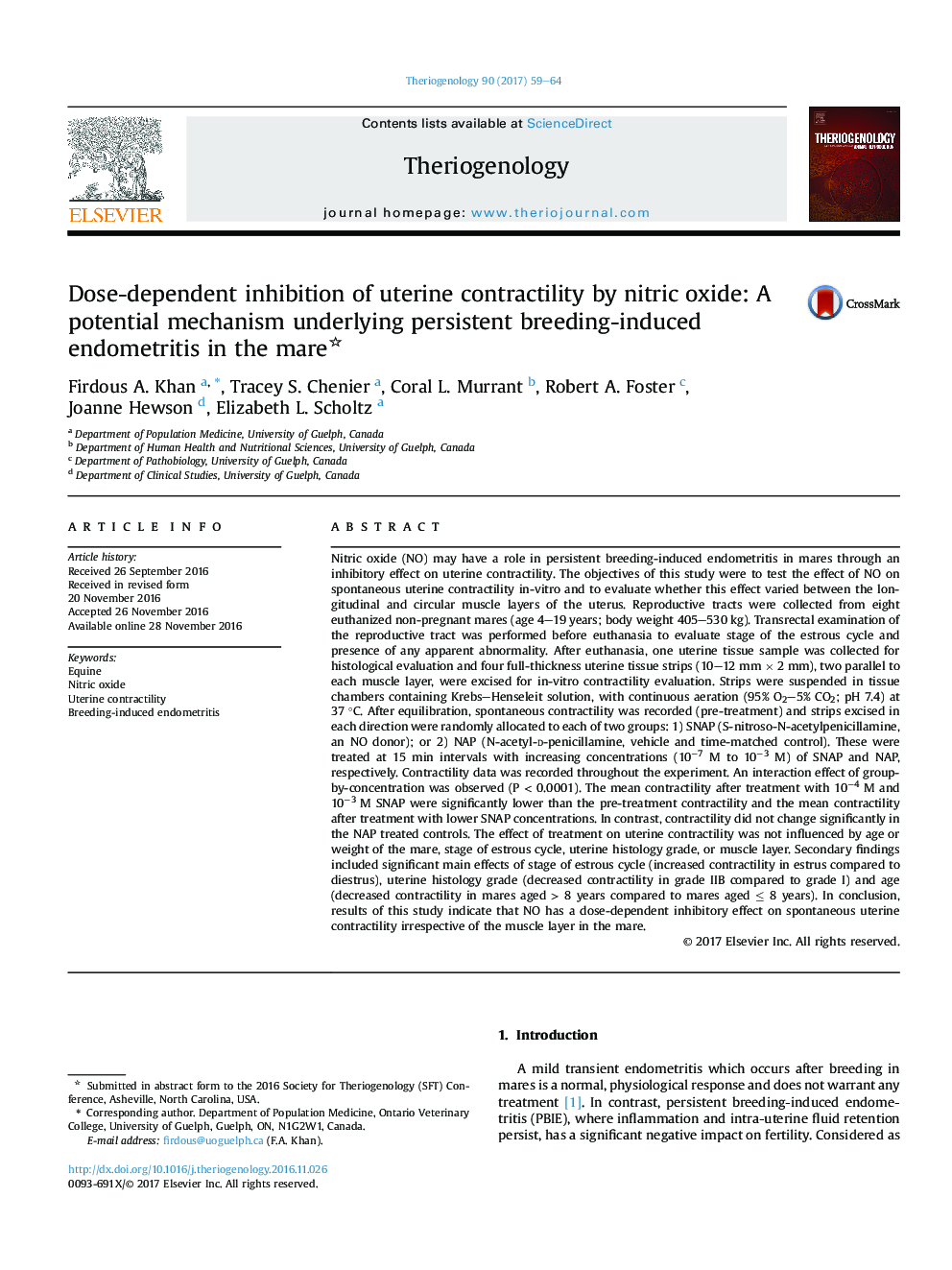| کد مقاله | کد نشریه | سال انتشار | مقاله انگلیسی | نسخه تمام متن |
|---|---|---|---|---|
| 5523117 | 1546079 | 2017 | 6 صفحه PDF | دانلود رایگان |

- Treatment with SNAP, a nitric oxide donor, caused a dose-dependent inhibition of spontaneous uterine contractility.
- The effect of SNAP treatment on uterine contractility was not influenced by age or weight of the mare.
- The effect was also not influenced by stage of estrous cycle, uterine histology grade, or uterine muscle layer.
- Stage of estrous cycle, uterine histology grade, and age had significant main effects on spontaneous uterine contractility.
- This study indicates that nitric oxide causes a dose-dependent inhibition of spontaneous uterine contractility in the mare.
Nitric oxide (NO) may have a role in persistent breeding-induced endometritis in mares through an inhibitory effect on uterine contractility. The objectives of this study were to test the effect of NO on spontaneous uterine contractility in-vitro and to evaluate whether this effect varied between the longitudinal and circular muscle layers of the uterus. Reproductive tracts were collected from eight euthanized non-pregnant mares (age 4-19 years; body weight 405-530 kg). Transrectal examination of the reproductive tract was performed before euthanasia to evaluate stage of the estrous cycle and presence of any apparent abnormality. After euthanasia, one uterine tissue sample was collected for histological evaluation and four full-thickness uterine tissue strips (10-12 mm Ã 2 mm), two parallel to each muscle layer, were excised for in-vitro contractility evaluation. Strips were suspended in tissue chambers containing Krebs-Henseleit solution, with continuous aeration (95% O2-5% CO2; pH 7.4) at 37 °C. After equilibration, spontaneous contractility was recorded (pre-treatment) and strips excised in each direction were randomly allocated to each of two groups: 1) SNAP (S-nitroso-N-acetylpenicillamine, an NO donor); or 2) NAP (N-acetyl-d-penicillamine, vehicle and time-matched control). These were treated at 15 min intervals with increasing concentrations (10â7 M to 10â3 M) of SNAP and NAP, respectively. Contractility data was recorded throughout the experiment. An interaction effect of group-by-concentration was observed (P < 0.0001). The mean contractility after treatment with 10â4 M and 10â3 M SNAP were significantly lower than the pre-treatment contractility and the mean contractility after treatment with lower SNAP concentrations. In contrast, contractility did not change significantly in the NAP treated controls. The effect of treatment on uterine contractility was not influenced by age or weight of the mare, stage of estrous cycle, uterine histology grade, or muscle layer. Secondary findings included significant main effects of stage of estrous cycle (increased contractility in estrus compared to diestrus), uterine histology grade (decreased contractility in grade IIB compared to grade I) and age (decreased contractility in mares aged > 8 years compared to mares aged â¤Â 8 years). In conclusion, results of this study indicate that NO has a dose-dependent inhibitory effect on spontaneous uterine contractility irrespective of the muscle layer in the mare.
Journal: Theriogenology - Volume 90, 1 March 2017, Pages 59-64